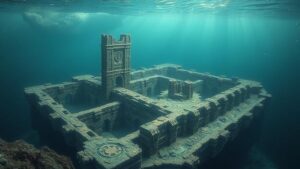Searching for the lost history behind the “Rongorongo Tablets” of Easter Island.
Searching for the Lost History Behind the Rongorongo Tablets of Easter Island
Located in the southeastern Pacific Ocean, Easter Island, or Rapa Nui, is renowned not only for its monumental stone statues, the Moai, but also for the enigmatic Rongorongo tablets. These wooden tablets, inscribed with glyphs, represent one of the most remarkable unsolved puzzles of Pacific archaeology. Despite extensive research, the meaning and origin of Rongorongo remain elusive, leaving historians and linguists alike in a quest for understanding.
The Discovery of Rongorongo
The first known account of the Rongorongo tablets emerged in the late 19th century. In 1864, French engineer and archaeologist Polynesian missions soldier Henri Lavachery brought attention to the glyphs after his encounter with local Rapa Nui individuals. He noted their unique carvings, which differentiated them from the islands more widely known Moai. Historians date the creation of these tablets to between 1400 and 1650 CE, based on their stylistic analysis and carbon dating methods.
The Characteristics of Rongorongo
Rongorongo tablets are typically made from native Toromiro wood, and the inscriptions consist of glyphs arranged in rows, primarily read from left to right. e are over 120 distinct glyphs, many of which resemble human and animal figures, tools, and celestial objects. This system of writing is unique to Rapa Nui, prompting questions about its function and the culture from which it originated.
- Symbolic Complexity: The glyphs are intricate, often containing multiple layers of meaning that suggest a sophisticated understanding of language and symbolism.
- Material Culture: The tablets serve as a testament to the material culture of the Rapa Nui people, offering insights into their societal beliefs.
Theories and Interpretations
Many theories have emerged concerning the purpose of Rongorongo. Some scholars argue that the tablets functioned as a form of record-keeping, possibly tracking agricultural cycles or significant events within the society. Others believe their primary purpose was ceremonial, associating the glyphs with religious practices or oral histories.
Language and Linguistic Studies
Linguistic analysts have attempted to decode the scripts but have faced numerous challenges. Some have likened the scripts complexity to that of ancient Egyptian hieroglyphics. For example, Steven Roger Fischer, a prominent linguist, proposed a reading framework for the glyphs in the 1990s, yet consensus on accurate translations remains out of reach. Only a handful of tablets have been documented, mainly stored in museums worldwide, increasing the difficulties for research efforts.
The Fate of the Tablets
Following European contact, the Rapa Nui society underwent significant changes, jeopardizing the preservation of their cultural history, including the Rongorongo tablets. Various tablets were lost, destroyed or removed from the island, particularly during the extensive missionary activity of the late 19th century.
- Museum Collections: Presently, only a few original Rongorongo tablets exist, housed in institutions such as the British Museum and the National Museum of Natural History in France.
- Preservation Challenges: The remaining tablets show deterioration, emphasizing the urgency for effective preservation methods to safeguard these irreplaceable artifacts.
Modern Efforts and Future Directions
Today, archaeologists and linguists globally are dedicated to unraveling the mystery of Rongorongo. Initiatives include advanced imaging techniques and computational linguistics to analyze existing materials more thoroughly. Collaborations with Rapa Nui communities to document and honor their heritage through living histories are also gaining traction.
Community Involvement
Engaging the local community is crucial for future research. By involving Rapa Nui descendants, interdisciplinary approaches might uncover oral traditions that complement archaeological data. This method not only enriches historical narratives but fosters cultural pride and awareness within indigenous populations.
Conclusion: The Call to Action
The search for the lost history behind the Rongorongo tablets remains a captivating journey without a definitive conclusion. As archaeological methodologies evolve, there lies hope that scholars will unlock the secrets of these ancient texts. Committing to preserving the remaining tablets and integrating local knowledge into research are vital steps to honoring Rapa Nuis rich legacy.
In light of such endeavors, the world stands at a crossroads where respecting ancient traditions and advancing modern scholarship can harmoniously coexist.



